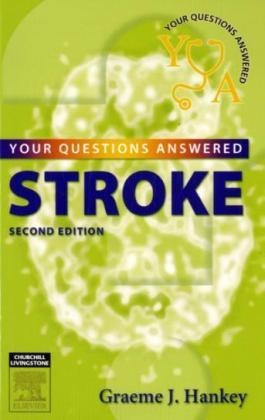Read more
How to use this book 1. Terminology and definitions (what is a stroke?) Patient questions 2. Epidemiology how big is the problem of a stroke?) 3. Diagnosis of stroke and transcient ischaemic attack (is it a vascular event?) Symptoms and signs Diagnosis of transcient ischaemic attack diagnosis of stroke Subarachnoid haemorrage Patient questions 4. Localisation of the lesion (where is the damage?) Carotid and vertebrobasilar territory ischaemia Stroke syndromes Boundary zone infarctions 5. Pathological diagnosis Patient questions 6. Aetiological diagnosis 1 (what are the possible causes?) Establishing the cause of stroke Atherosclerosis as a cause of ischaemic stroke Intracranial small vessel disease as a cause of stroke Embolism from the heart as a cause of stroke Rarer causes of ischaemic stroke Establishing the cause of brain haemorrhage Patient questions 7. Aetiological diagnosis 2 (what are the possible risk factors?) General risk factors Cardiovascular risk factors Metabolic risk factors Hormonal risk factors Lifestyle risk factors genetic risk factors Patient questions 8. Aetiological diagnosis 3(what investigations are needed?) Imaging Laboratory tests Patient questions 9. Prognosis (what does the future hold for the patient?) Prognosis of stroke Prognosis of TA Prognosis of subarachnoid haemorrhage Patient questions 10. Early management (should patients be referred to hospital?) Patient questions 11. Hospital management The stroke unit The stroke team The work of the stroke team Patient questions 12. General management (what is basic stroke care?) Patient questions 13. Specific management (what therapy for stroke is effective?) Management principles Thrombolysis in acute ischaemic stroke Asprin therapy Anticoagulation therapy Prevention of deep vein thrombosis Other treatments Patient questions 14. Secondary prevention (how can recurrance be prevented?) Reduction of blood pressure Other measures to prevent recurrent stroke Lifestyle modification and diet Antiplatelet therapy Surgical interventions Stroke caused by cardiogenic embolism Selection of patients for thromboprophylaxis Decision-making Patient questions Post-stroke care (how should new problems be managed?) Progress of stroke Complications Deep vein thrombosis and pulmonary embolism Residual handicaps Patient questions Stroke in special populations Appendix A: Volunteer and support groups and websites Appendix B: Diagnostic evaluation of suspected transcient ischaemic attack and stroke References Glossary List of patient questions Index...

